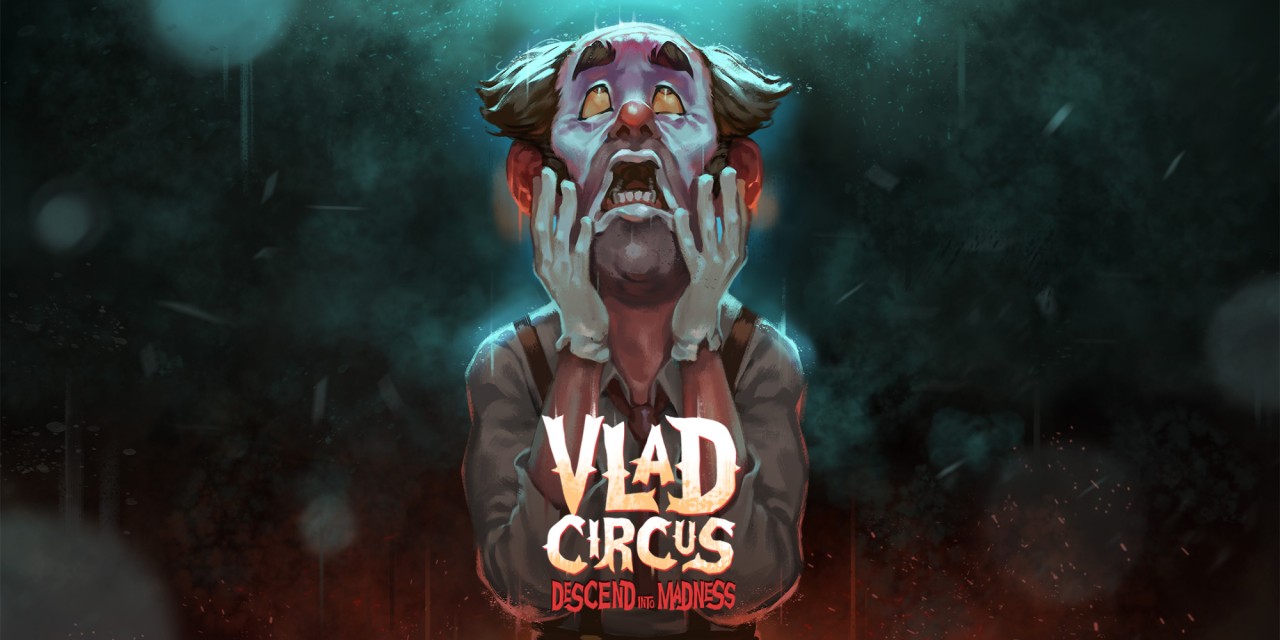Halloween season is upon us, and as I was writing up this month’s Indie Game List I was pretty excited after seeing Vlad Circus: Descend Into Madness was due for release. After watching the trailer, it was seemingly ticking all the boxes for me: a grounded and evocative pixel art style, an isometric survival horror experience and an intriguing protagonist with a mystery unfolding before them.
It was all shaping up to be a perfect new spooky game but how is it in execution? I might be an easy target for Vlad Circus, so it’s worth bearing that in mind, but there is a palpable je ne sais quoi to the game, whilst having some solid foundations for the genre it aims to be. So will Vlad Circus keep you up at night for the right reasons? Or will you be the one descending into madness? Let’s get into it.
The Last Laugh
You play as Oliver Mills, a former clown for Vlad Circus until its untimely destruction 5 years prior. The year is now 1929 and Oliver is out of an asylum after seeking help following the events. He is invited to the circus ring leader’s mansion to consider a potential return of the notorious freak circus. Things go awry very quickly though as Oliver and his circus friends can’t find him, leading to unexplainable instances in the mansion.
You’ll learn more of the narrative through the many conversations you have with your circus friends, but a key mechanic that keeps track of the story is Oliver’s journal. It’s written from his frame of mind giving a distinct perspective of all the events that take place, past and present. You gauge a level of intent from the characters you meet via the potentially untrustworthy narrator.
The clown make-up and outfit Oliver wears isn’t just an aesthetic juxtaposition, as it is an allegory for his frame of mind. Wanting to get the band back together, missing a past lover and feeling the guilt of the innocent attendees who lost their lives in the fire. There’s a good amount of subtext to pick up from the narrative and despite my best efforts of guessing plot points I still was wrong, to the game’s credit.
However, there are some bludgeoning themes explored that are about as subtle as a clown in a crematorium and with a criminally short runtime of 4 hours, it felt less of a descent rather than a plummet. The game doesn’t overextend its welcome though with the runtime as a lot of the game might feel benign due to its overuse of backtracking. Vlad Circus teeters on the edge of offence but overall delivers a fairly decent story.
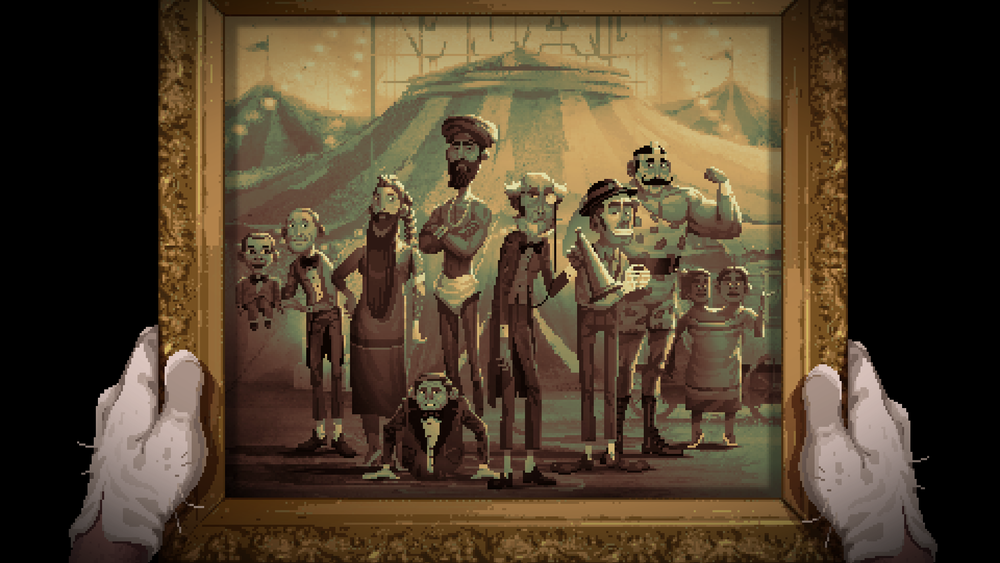
A Series Of Unfortunate Events
Vlad Circus describes itself as a psychological horror puzzler with light survival mechanics, which is undeniably apt. Had there been no survival mechanics – which I’ll get into – this would be an equally as atmospheric point-and-click adventure. The puzzles are the core element and definitely the strongest aspect the game has going for it. You awake in the guest room of the mansion and the tutorial breaks down a couple of things. The aforementioned journal – that takes an item slot – some prayer beads and shortly after a lamplight, leaving you with three item slots left.
These are completely optional if you want to leave them, but they all offer up an important mechanic for you to survive. You don’t have health in the game but a stress meter. This can fill up through Oliver’s visions of dead bodies, which soon come to attack you or take damage from various means. The prayer beads mean that you can pray and lower that stress bar and effectively heal yourself. What Vlad Circus gets really right is that they’re not doing things for aesthetic’s sake but embedding the context of the character through game mechanics in very simple yet effective ways.
At one point, I found a gun in a briefcase and I didn’t pick it up as I just didn’t feel it was right for Oliver to be waving a gun around in front of his circus friends just after getting out of an asylum. I wasn’t punished for this choice and whilst there aren’t many other instances of this, it plays into the psychological horror aspect the game goes for. The paranoia of seeing things, the uncanny goings on in the mansion and your doctor following you to advise taking a tonic to calm your nerves. It collectively delivers an all-consuming atmosphere.
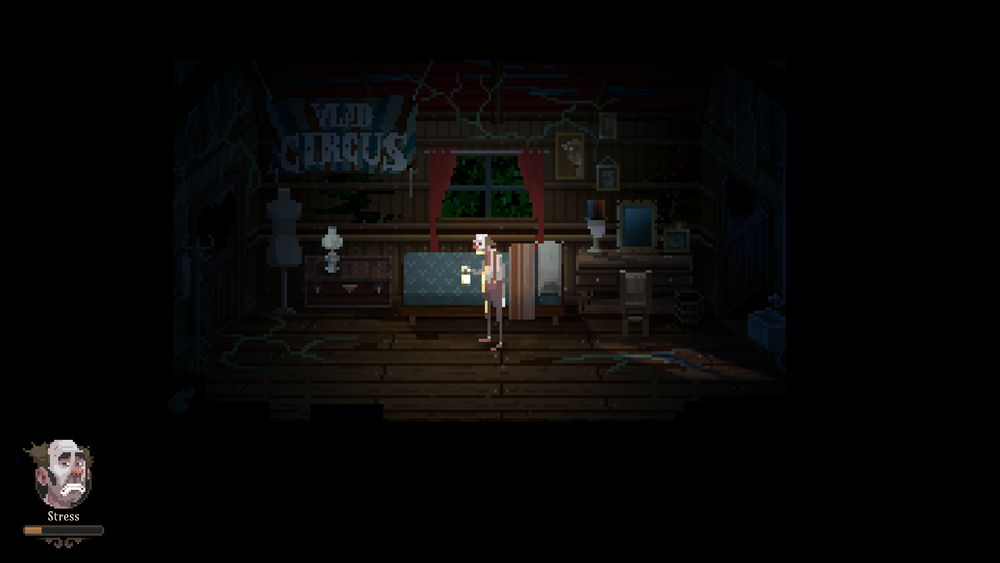
Trauma Bonds
The bulk of the game that holds the mechanics I’ve mentioned together are the logical puzzles. There’s a lot of finding items out of sequence, retracing steps and getting that a-ha moment when you figure out what said item pertains to. However, this does mean a tremendous – with a capital T – amount of backtracking. I’d go as far as to say the entire game is backtracking as there are only so few rooms you’ll be revisiting throughout and the others you’ll never need to be in again.
It makes the game feel microscopic in scope when the narrative and themes are taking big swings. I can see players taking umbrage with this aspect as it’s four hours of the same walls, but tonally it fits. The title is ‘Descend Into Madness’ and if it’s not Oliver it may just be the player trying to solve these puzzles in some of the same four walls.
This is where the point-and-click comparison comes in, it’s very real-world knowledge-based things that the puzzles rely on. For example, the lights go out early in the game, I saw a fuse in the kitchen, then upstairs I found copper wire and thought to myself that might help conduct the electricity back and what do you know it did. Very specific requirements through iterative puzzle solving is this game’s bread and butter. The way the mystery unfolds puzzle after puzzle was gratifying and addicting. I more or less beat the game in a day as I couldn’t wait to find out what was next.
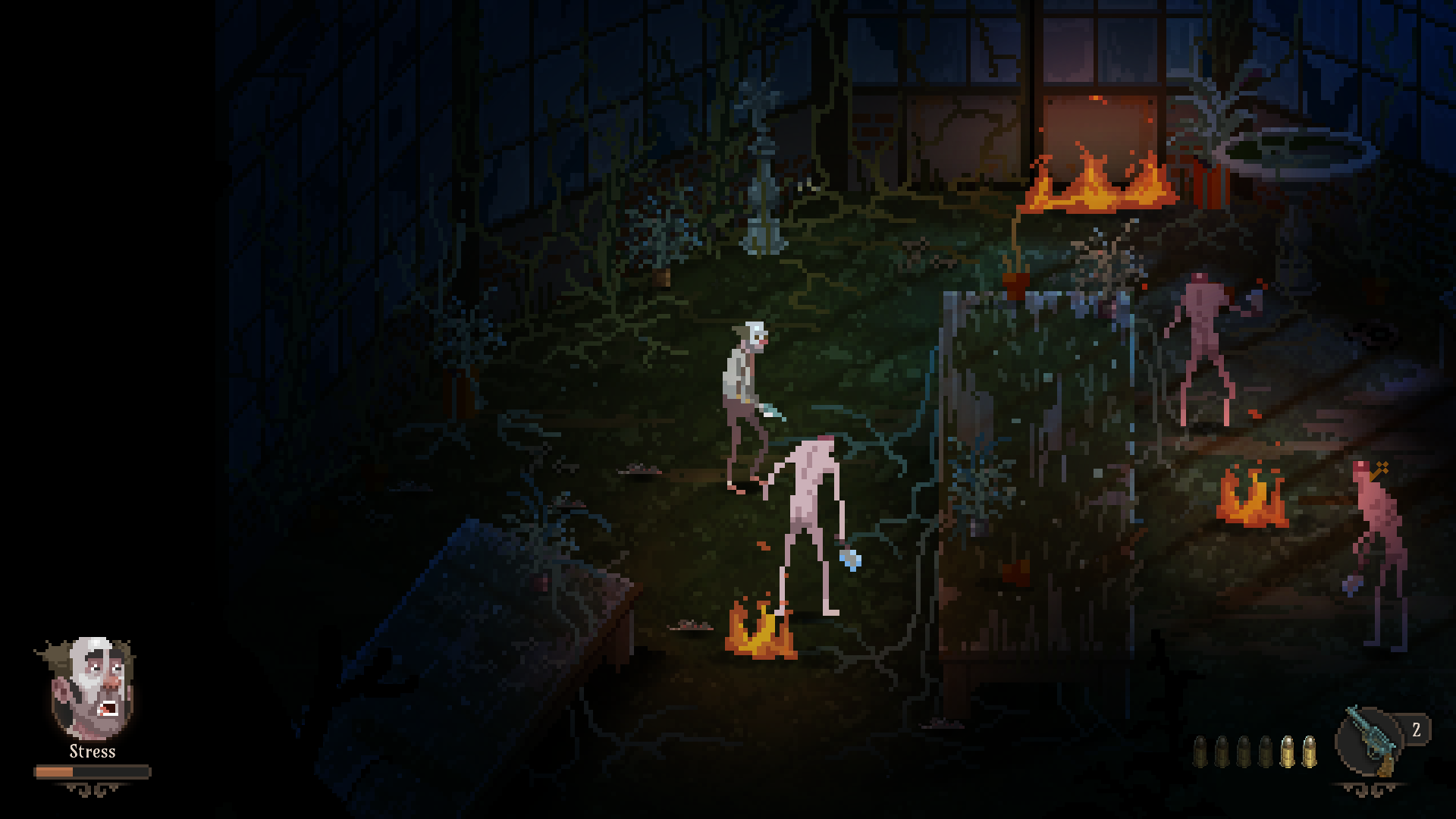
You’re In Here With Me
You can for the most part go through the game without combat, which as you know I pretty much did. There were times when imbibing in violence was necessary and it was just okay. You have to be facing a moving target to get a hit on them, whether that’s through melee or gunfire and it’s not the most accurate or satisfying.
I did just largely run past most of the enemies and that works fine, but if you’re doing a lot of back-and-forth trying to solve the game’s puzzles you may hate the finite lamplight. There are some spots where you can refill it with kerosene, but there’s no telling that you can, or where you can. There are a couple of these very minor instances where you’re facing some leaps in logic that feel a little unfair. With that said, the payoff in failing isn’t a massive loss as you wake up relatively close by with no progress lost.
I know I said there aren’t too many areas to explore in the game, but the places you do are just some of the best pixel art I’ve seen. The environmental detail of the forlorn mansion, from its attic to its basements. The overgrown gardens where the wagon cemetery lies fill the atmosphere with melancholy and the distinctly detailed character designs do so much for the overall presentation of the game.
Games like NORCO and now Vlad Circus have a pitch-perfect depiction of the gritty realism of abandoned areas that are so striking. The use of lighting that illuminates these environments really sells the mood that Vlad Circus goes for. This has very quickly become one of my favourite uses of the pixel art style to date.
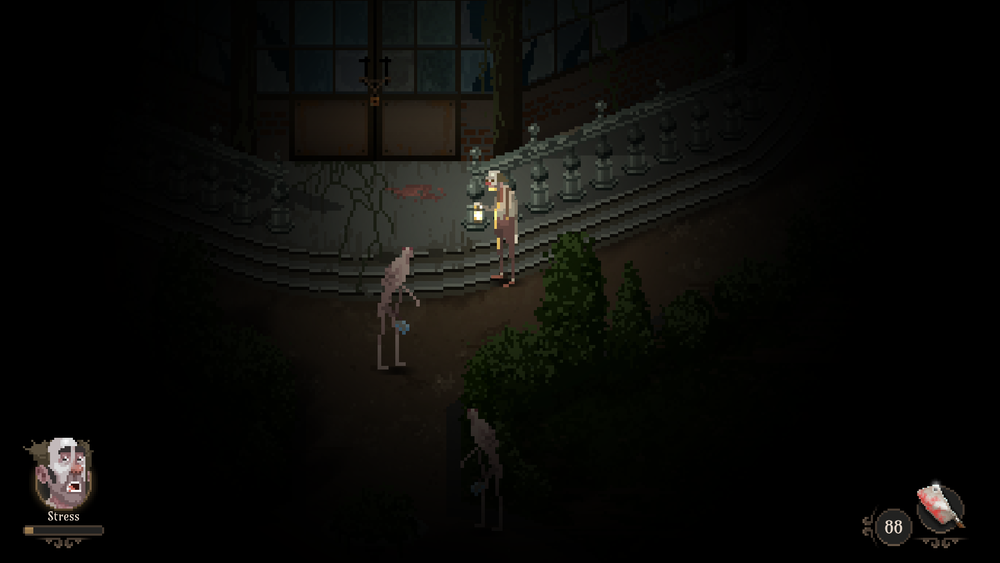
The Punch Line
I had a lot of fun with Vlad Circus: Descend Into Madness, despite the short runtime and the abundance of backtracking. I think Indiesruption set out to make a cinematic survival horror with mature themes and for the most part achieves that goal. The game isn’t immensely scary but there’s a potent feeling of dread every moment of the gameplay.
The game does an excellent job of not really presenting you with all the facts and playing on your expectations as someone who’s following the story and playing a game with familiar codes and conventions. I honestly can’t gush enough about the art style and overall presentation, but it does hit home the quality this bite-size game displays.
If you’re looking for a horror game that’s more introspectively scary, that’s beatable in an evening and has some fairly decent writing, this game is definitely one to pick up this Halloween. I think the puzzles are just the right amount of difficulty whilst in keeping with the tone of the game and some of the hints to help you are subtly clever. Like I said, I’m an easy mark for this game as it ticks all my boxes, but there really is a good amount to love with Vlad Circus: Descend Into Madness.
If it’s not the brilliant pixel art style or the paranoid protagonist that goes through one hell of a night, it’s the well-executed amalgamation of mechanics that feeds into a horror puzzler that’ll keep you enthralled for a night. Vlad Circus: Descend Into Madness is a modest title that I just wish I had more of, as the qualities of a great game are all there but the brisk trip to insanity holds itself back.

Vlad Circus: Descend Into Madness is available 17th October for PlayStation 4 (review platform), PS5, Xbox Series X|S & One, Nintendo Switch and PC via Steam.
Developer: Indiesruption
Publisher: Blowfish Studios
Disclaimer: In order to complete this review, we were provided with a promotional copy of the game. For our full review policy, please go here.
If you enjoyed this article or any more of our content, please consider our Patreon.
Make sure to follow Finger Guns on our social channels. Twitter, Facebook, Twitch, Spotify or Apple Podcasts – to keep up to date on our news, reviews and features.
